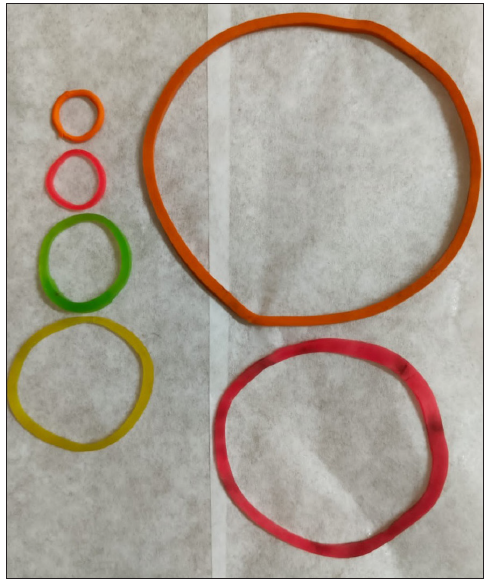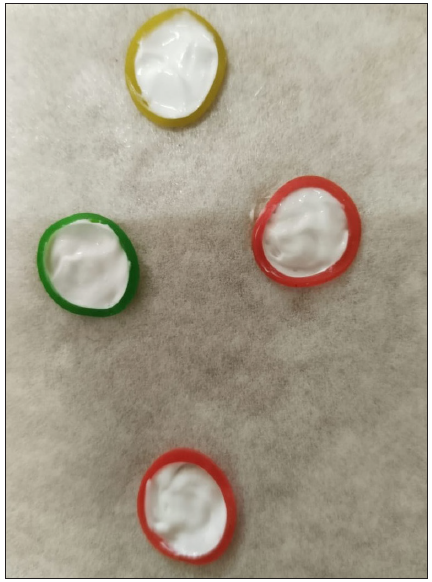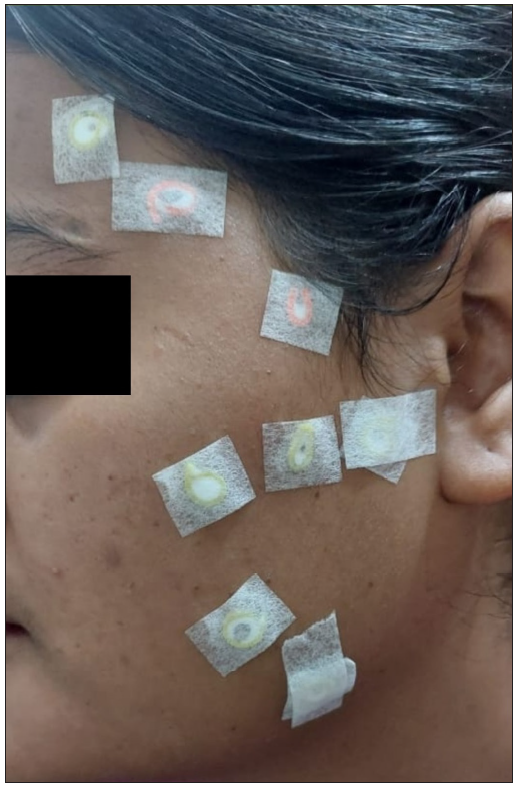Topical anaesthetics are widely used in day-to-day practice for many minor dermatologic procedures. However, at times they fail to give the desired effect because of the spillage of cream to the surrounding area. To prevent this spillage, the use of a surgical tape loop has been suggested by the authors in the past.1 We observed, however, that creating a loop with surgical tape is somewhat cumbersome and not suitable for small areas.
SolutionTo overcome this problem, we describe the use of rubber bands of varied sizes to minimise the spread of local anaesthetic cream beyond the desired area. These are freely available in most general stores and the appropriate size [Figure 1] can be chosen according to the size of the area to be anaesthetised.. The rubber band of appropriate size is stuck on the surgical tape [Figure 2]. The local anaesthetic cream is filled in the rubber band loop and this cream-filled contraption may be stuck on the skin [Figure 3]. We have not noticed any contact dermatitis with these rubber bands so far. This technique can be used on any anatomical site and at any age including children and the patients can lie down or sit comfortably after application. We have observed a marked improvement in quality, time of onset, and duration of anaesthesia achieved with this method. However, we have not done any comparative study so far. The rubber bands are easily available and disposable thus making this technique more user friendly than using a surgical tape loop as described previously.

Export to PPT

Export to PPT

Export to PPT
留言 (0)